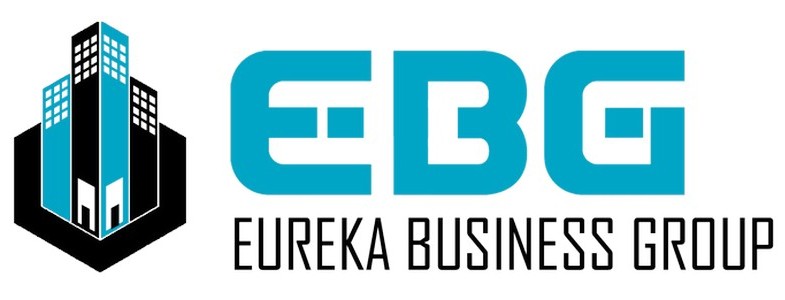- Home
- Retail
- Retail Investors Resources
- How to Spot High-Growth Retail Areas: Tips for Investors!
How to Spot High-Growth Retail Areas: Tips for Investors!
When it comes to retail real estate investing, one of the most important factors to consider is location. Not just any location, but specifically high-growth retail areas that can offer strong returns and long-term stability. Identifying these high-growth zones can be challenging, but with the right strategies and understanding of market trends, investors can secure prime retail properties that appreciate in value and attract thriving businesses.
In this blog post, we’ll explore key tips for spotting high-growth retail areas and why these factors are critical for successful retail real estate investment.
1. Understand the Demographics
The first and perhaps most crucial element in spotting a high-growth retail area is understanding the demographics of the region. Retail success often depends on the local population, their buying habits, income levels, and lifestyle preferences.
Population Growth: Areas experiencing consistent population growth are often prime candidates for retail expansion. More people typically translate to increased demand for goods and services, which can create fertile ground for retail businesses. Cities and suburbs seeing an influx of residents, particularly young professionals or families, are likely to witness retail growth.
Income Levels: Areas with higher-than-average income levels tend to support more high-end and luxury retail stores, while middle-income areas are ideal for chain stores and value-based retailers. Understanding the average household income will help you gauge the type of retail that will thrive in a specific location.
Consumer Preferences: It’s also essential to research local consumer preferences and habits. What types of products or services are people in this area most interested in? Do they favor big-box retailers, boutique stores, or local businesses? Being aware of these preferences will guide you toward choosing retail tenants or investment properties that meet local demand.
2. Study Economic Indicators
Economic health plays a significant role in identifying high-growth retail areas. Strong local economies lead to increased disposable income and more spending power for consumers. Key economic indicators to pay attention to include:
Job Growth: A healthy job market often fuels retail demand, as people with stable incomes are more likely to spend on goods and services. Look for areas experiencing low unemployment rates, increasing wages, or booming industries that bring in new jobs. Tech hubs, for example, often stimulate the growth of restaurants, cafes, and shopping centers catering to high-income professionals.
Real Estate Development: Keep an eye on areas with significant real estate development projects, whether it’s new residential housing, commercial buildings, or mixed-use developments. These projects often signal long-term growth, which can make nearby retail spaces highly desirable for businesses.
Infrastructure Improvements: Local governments investing in infrastructure such as public transportation, roads, and utilities can signal future growth. Retailers want to set up shop in areas where access is convenient and foot traffic is high. Be sure to research infrastructure plans in the cities or regions you’re considering.
3. Watch for Gentrification
Gentrification, while sometimes controversial, can indicate an area on the rise. Gentrification often involves the influx of wealthier residents into previously lower-income neighborhoods, leading to increased demand for retail, dining, and entertainment options.
Look for telltale signs of gentrification such as:
New Businesses Opening: The arrival of trendy cafes, boutiques, or fitness studios in previously underdeveloped areas can signal the start of a neighborhood’s retail growth. These businesses are typically the first wave, with larger chains and more established retailers following once the area’s growth is confirmed.
Rising Home Prices and Rental Rates: As neighborhoods gentrify, property values often rise, along with rents. Investors can capitalize on this by purchasing retail properties early in the gentrification process, before values peak.
Changing Demographics: Keep an eye on shifting demographics in the neighborhood, such as an influx of young professionals or creative industries. These groups often drive the demand for new retail and dining experiences, contributing to the area’s growth.
4. Evaluate Retail Competition
While it may seem counterintuitive, the presence of other successful retailers can be a positive indicator of a high-growth retail area. Retailers often cluster together in successful shopping districts or neighborhoods because they benefit from shared foot traffic and consumer interest. However, there’s a fine balance between healthy competition and market saturation.
Complementary Businesses: Look for areas where retail businesses complement rather than compete with each other. For example, a new gym opening in an area with a juice bar, clothing store, and health food store can create a retail ecosystem that caters to the same demographic.
Anchor Stores: Pay attention to areas that attract major anchor stores or big-name retailers. These stores often act as magnets, drawing in smaller businesses and creating retail hubs. An anchor store moving into an area can indicate that the location is poised for growth and will likely attract more retail tenants over time.
5. Assess Foot Traffic and Visibility
Foot traffic is critical for many retail businesses, especially those relying on impulse buys or walk-in customers. High-traffic areas such as busy streets, downtown shopping districts, or locations near transportation hubs tend to offer better opportunities for retail growth.
When evaluating retail properties or areas, consider:
Pedestrian and Vehicular Traffic: Is the location near a busy intersection or pedestrian-friendly area? Are there nearby public transportation stops or parking lots? More traffic typically means more exposure for retail businesses.
Signage and Visibility: Retailers also thrive when they have high visibility. Look for properties or retail areas with clear signage, good lighting, and storefronts that are easy to see from the street. Visibility plays a key role in attracting customers and boosting foot traffic.
6. Monitor Consumer Spending Trends
Consumer spending trends can provide valuable insight into the types of retail businesses that will thrive in certain areas. Shifting consumer behavior, such as the increasing preference for e-commerce, can impact the retail landscape. That said, brick-and-mortar stores are still thriving in many high-growth areas, particularly those that offer experiences or cater to specific consumer needs.
Experiential Retail: Consumers are increasingly seeking experiences rather than just products. Look for areas where experiential retail concepts, such as interactive stores, pop-up shops, or entertainment venues, are on the rise.
Local and Sustainable Goods: Retailers that focus on local, sustainable, or eco-friendly products are seeing a surge in popularity. Areas with a strong demand for these types of goods can be fertile ground for specialty stores and boutique retailers.
E-Commerce Integration: Retailers that combine brick-and-mortar operations with strong e-commerce offerings are succeeding in many markets. High-growth retail areas often feature businesses that seamlessly blend online and offline shopping experiences, such as stores with pickup options or interactive in-store kiosks.
7. Leverage Data and Technology
Today’s real estate investors have access to more data and technology tools than ever before. By leveraging these resources, you can make more informed decisions about high-growth retail areas.
Heatmaps and Foot Traffic Analytics: Many tech platforms provide heatmaps and foot traffic data to help investors evaluate which retail locations get the most activity. This data can be invaluable when selecting properties with high growth potential.
Market Research Tools: Online platforms and databases offer insights into market trends, demographic shifts, and economic forecasts. Use these tools to identify cities or neighborhoods experiencing rapid growth and to analyze local real estate trends.
Social Media Listening: Monitor social media platforms to see where new businesses are generating buzz and attracting attention. Areas gaining popularity among social media users often translate into high-growth retail markets.
Conclusion
Spotting high-growth retail areas requires a combination of market research, demographic analysis, and an understanding of consumer behavior. By focusing on these key factors — demographics, economic indicators, gentrification, competition, foot traffic, and the latest consumer trends — retail investors can identify prime locations poised for growth and ensure long-term success in their investments.
With careful planning and a strategic approach, you can capitalize on emerging retail hotspots and build a thriving retail portfolio.



